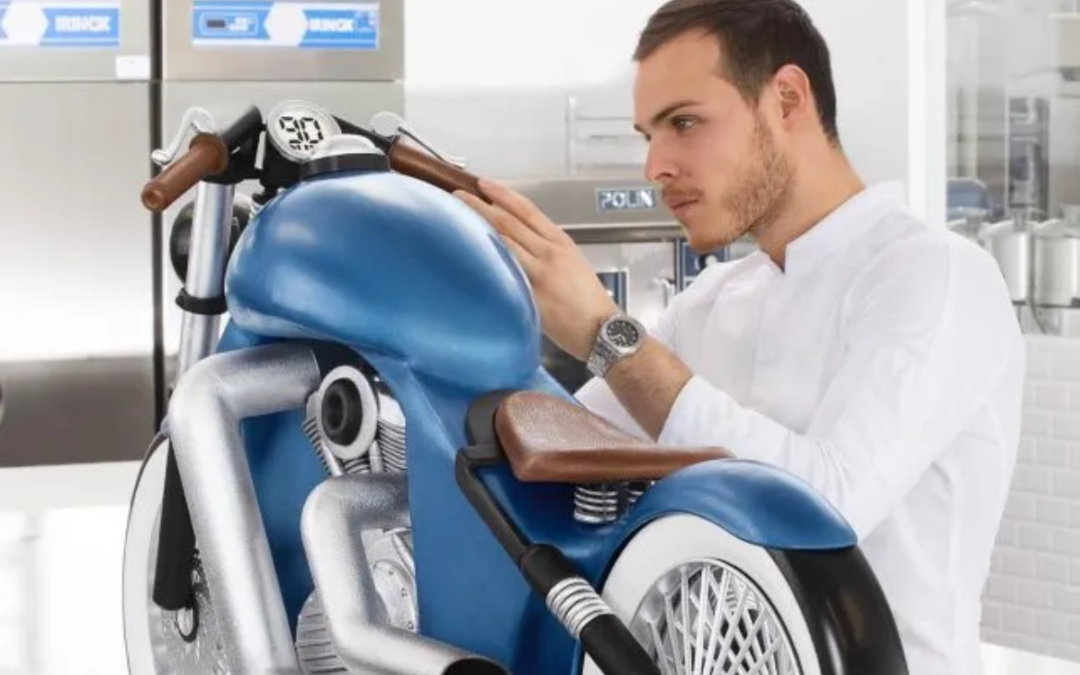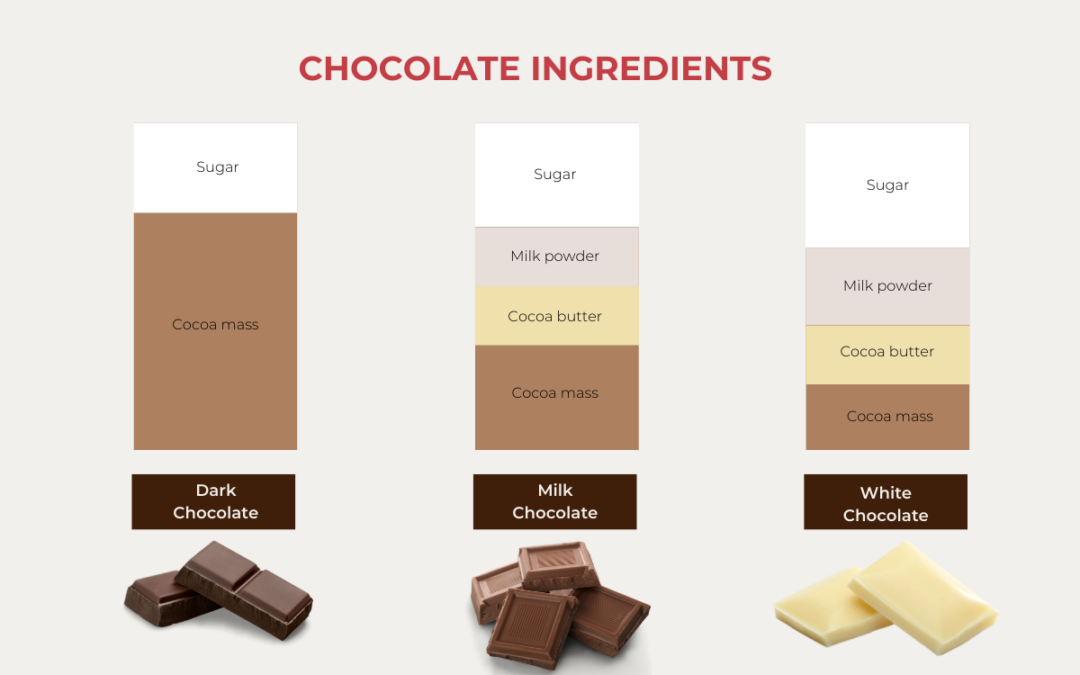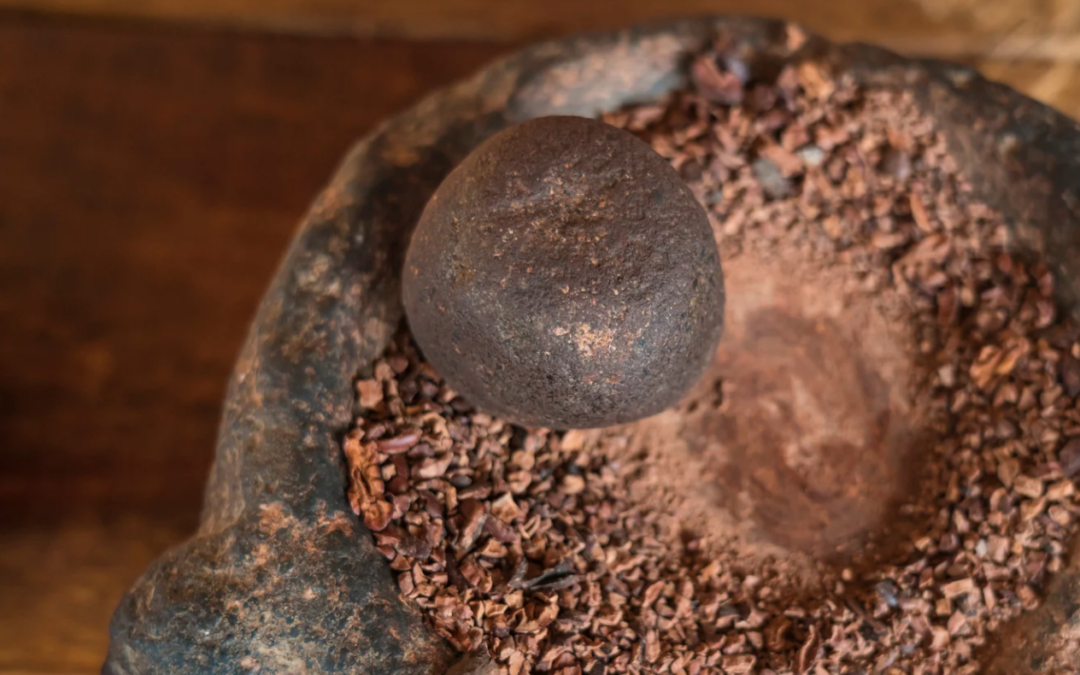In this blog post, we’ll explore the science behind getting that amazing shiny look on your chocolate. We’ll share tips for getting the temperature just right. We’ll teach you the essential techniques and factors that will help you achieve that rich, shiny chocolate finish. Getting that great surface shine starts with great tempering, so let’s review.
What is chocolate tempering?
Chocolate tempering is a precise process of heating and cooling chocolate to encourage the formation of stable cocoa butter crystals. The process ensures that the chocolate has a smooth, glossy appearance and a satisfying snap when broken. Tempering temperatures must be carefully monitored because they affect the texture and appearance of the chocolate.
Properly tempered chocolate also has a longer shelf life and can be used for various applications, such as coating, molding and dipping.
There are several ways to temper chocolate. The most commonly used methods are seeding, tabling and using specialized tempering machines. The goal is to achieve the right balance of crystal structures so that the chocolate becomes glossy and appealing.
For more information, check out our previous blog post on chocolate tempering!
What’s a chocolate tempering machine?
A chocolate tempering machine is a specialized piece of equipment designed to simplify and automate the tempering process in chocolate making. There are both commercial systems as well as smaller machines designed for home use. It provides precise control over the chocolate temperature, making it easier for home cooks and professionals alike to achieve consistent results when working with chocolate.
The process starts with melting the chocolate, and then cooling it down to encourage the formation of specific cocoa butter crystals. The machine gently heats the chocolate at the end of the process to ensure an optimal working temperature.
How to temper chocolate with CocoTerra
The CocoTerra machine automates the entire chocolate-making process, including tempering. CocoTerra will also feature a tempering-only mode. To use this feature, you can break up solid chocolate or melt it and pour it into the processing chamber, then run the tempering cycle. Once the chocolate is tempered, the CocoTerra machine will mold it as usual.
Cooling and Demolding
Even if you have achieved the perfect temper process, you can lose the perfect shiny surface if you don’t cool and demold your chocolate properly. Cooling your chocolate too quickly can cause temper issues, and in other cases, not cooling the chocolate well enough will do the same. Avoid putting your chocolate in the freezer. This can cool too quickly and can also cause condensation to form on your chocolate after you pull it out. This condensation can dissolve sugar on the surface of your chocolate and then cause spots after the water evaporates.
If you are working with a large molded object or a thick bar, you will want to stick the mold in the refrigerator since it may need extra help cooling properly. It may seem counterintuitive, but as the chocolate solidifies, it actually generates some heat, so large chocolates may lose their temper from their own heat. Also, be careful not to stack too many molds on top of each other since the ones in the middle of the stack might not cool properly.
Some people like to warm their molds to ensure that the chocolate solidifies evenly. If you pour warm chocolate into a cold mold, the first bits of chocolate that hit the mold will cool more quickly and they might leave swirl marks in your chocolate. After the chocolate has been poured into the molds and had a chance to cool evenly, it’s time to demold. Ideally, you want to let your chocolate release itself from the mold before you de-mould your chocolate. Chocolate shrinks slightly when it cools, so with a good temper, it should pull itself off the mold. If you look at the underside of the mold, you can often see an air gap form as the chocolate pulls away from the plastic. This will prevent what are called “release lines” or “release marks” on your chocolate. Finally, make sure that you are using clean, high-quality molds. Some molding marks can come from the mold itself. Ridgid polycarbonate molds are the gold standard in the chocolate industry.
Tips and tricks for shiny chocolate
Proper tempering
Tempering chocolate is a key step in achieving shiny chocolate. This means gradually melting and cooling it to specific temperatures. This encourages the formation of stable cocoa butter crystals, resulting in a glossy finish.
Use good quality chocolate
It’s important to start with high-quality chocolate, as the cocoa butter content plays a role in achieving shine.
Use good quality molds
It’s important to use with high-quality molds with a shiny surface. The chocolate will incorporate any defects that are in the mold, so make sure to replace them as they get beat up.
Stay away from water when making chocolate
Make sure all utensils and surfaces are dry before using chocolate, as water can cause it to seize and lose its shine.
Use clean chocolate molds
Before pouring your chocolate, ensure that the molds are clean and dry. Any residue can affect the final appearance of your chocolate.
Ensure proper temperature
Let the chocolate set at the right temperature for the ideal crystal formation, usually between 55-65°F (13-18°C).It is best if you let the chocolate sit out at room temperature for a while before refrigerating. Rapid cooling such as in a freezer can cause condensation and dullness.
Use coconut oil to make chocolate shine
If you are making a compound chocolate or chocolate coatings, try adding a small amount of coconut oil to give your chocolate a glossy sheen. Experiment with the amount to achieve the desired level of shine without compromising the taste and texture of your chocolate treats.
By following these tips and tricks, you’ll be well-equipped to make your chocolate shine. Remember, achieving that coveted shine is a balance of technique, patience, and a touch of creativity.
We hope you enjoyed this article, check out the rest of our CocoTerra blog.
If you have any questions or comments, feel free to contact us through our social media channels. We are @cocoterra_co on Instagram and Pinterest and @cocoterraco on Twitter and Facebook.








